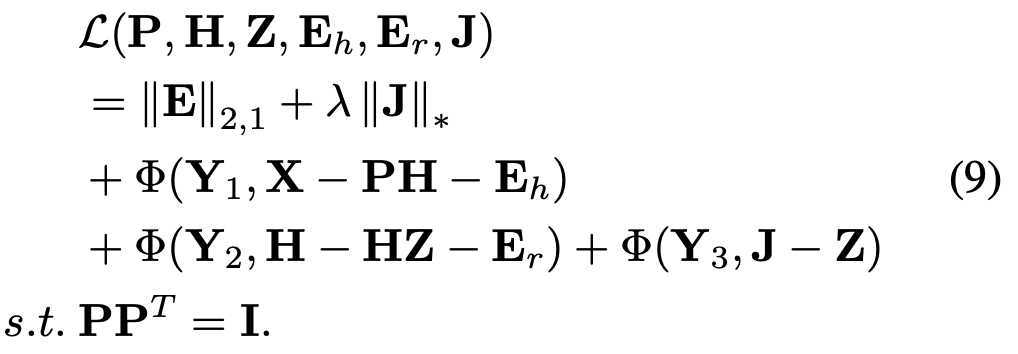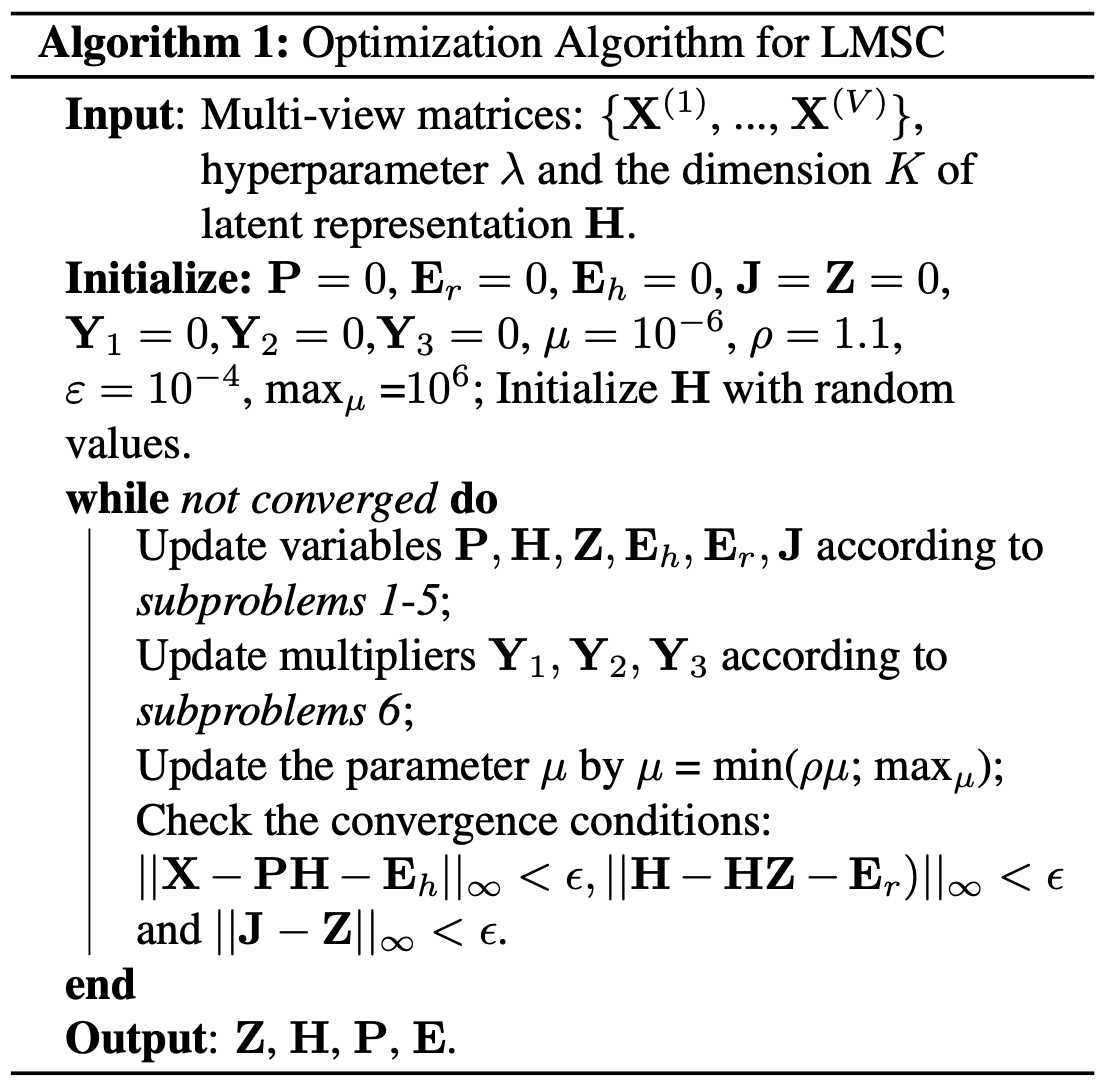Existing works usually reconstruct the data points on the original view di- rectly, and generate the individual subspace representation for each view. However, each single view alone is usually not sufficient to describe data points, which makes the reconstruction by using only one view itself risky. Moreover, the data collection may be noisy, which further increases the difficulty of clustering. To address these issues, this paper introduces a latent representation to explore the relationships among data points and handle the possible noise.
This work proposes a novel Latent Multi-view Subspace Clustering (LMSC) method, which clusters data points with latent representation and simultaneously explores underlying complementary information from multiple views.
The proposed method assumes that multi-view observations are all originated from one underlying latent representation.

objective function:

The first term is utilized to assure the learned latent representations H and reconstruction models P(v) associated to different views to be good for reconstructing the observations, while the second one penalizes the reconstruction error in the latent multi-view subspaces. The last term prevents the trivial solution by enforcing the subspace representation to be low-rank.
The above objective function can be solved by minimizing the following Augmented Lagrange Multiplier (ALM) problem

this problem is separated into 5 subproblems in order to optimize it with ALM-ADM (Augmented Lagrange Multiplier with Alternat Direction Minimizing strategy).

Test data sets used in this work:

The proposed method cannot be directly applied to very large data sets unless parallelization or random sampling is used.
Ming, Yin, Junbin, et al. Multiview Subspace Clustering via Tensorial t-Product Representation.[J]. IEEE Transactions on Neural Networks & Learning Systems, 2018.
论文笔记:Latent Multi-view Subspace Clustering
原文:https://www.cnblogs.com/picassooo/p/12877596.html